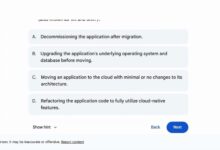AWS Login: 7 Powerful Ways to Secure & Simplify Access in 2024
Logging into AWS doesn’t have to be complicated. Whether you’re a developer, sysadmin, or cloud architect, mastering the aws login process is your first step toward seamless cloud control. Let’s break down everything you need to know—securely and efficiently.
What Is AWS Login and Why It Matters

The aws login process is your gateway to Amazon Web Services, the world’s most comprehensive cloud platform. It’s not just about typing a username and password—it’s about securely accessing a vast ecosystem of computing, storage, databases, and machine learning tools.
Understanding AWS Identity and Access Management (IAM)
At the heart of every aws login is AWS Identity and Access Management (IAM). IAM enables you to manage users, groups, roles, and permissions within your AWS account. Instead of sharing root credentials, IAM allows granular control over who can access what.
- Each user gets unique credentials.
- Permissions can be assigned via policies.
- Multi-factor authentication (MFA) is strongly recommended.
“IAM is the foundation of AWS security. Without proper identity management, your cloud environment is at risk.” — AWS Security Best Practices Guide
Difference Between Root User and IAM Users
When you first create an AWS account, you begin as the root user—the most powerful identity in your account. However, AWS strongly advises against using the root user for daily operations.
- Root User: Has unrestricted access to all resources and billing information.
- IAM Users: Created by administrators with limited, policy-defined permissions.
Best practice: Use the root user only to create an initial IAM admin user, then lock it away with MFA and never use it again.
Step-by-Step Guide to AWS Login via Console
The most common way to perform an aws login is through the AWS Management Console—a web-based interface. Here’s how to do it securely and correctly.
Navigating to the AWS Sign-In Page
Always start at the official AWS sign-in URL: https://aws.amazon.com/console/. Avoid bookmarking third-party links or using search engine results that might lead to phishing sites.
- Click “Sign In to the Console” in the top-right corner.
- Select whether you’re logging in as an IAM user or with your root account.
- Enter your account ID or alias.
Entering Credentials and Enabling MFA
After selecting your login type, enter your username and password. If MFA is enabled (and it should be), you’ll be prompted for a time-based one-time password (TOTP) from your authenticator app.
- Supported MFA devices include virtual apps like Google Authenticator, Authy, or hardware tokens like YubiKey.
- IAM users can configure MFA in the IAM dashboard under “Security credentials”.
- Root users should enable MFA immediately after account creation.
“Over 99% of account compromises could have been prevented with MFA.” — AWS Security Incident Response Guide
Using AWS CLI for Programmatic Login
For developers and DevOps engineers, the aws login process often happens programmatically via the AWS Command Line Interface (CLI). This method is essential for automation, scripting, and infrastructure-as-code workflows.
Installing and Configuring AWS CLI
Before you can use the AWS CLI, you need to install it on your local machine or CI/CD environment. Supported platforms include Windows, macOS, and Linux.
- Download from the official site: https://aws.amazon.com/cli/
- Run
aws configureto set up your access key, secret key, region, and output format. - Credentials are stored in
~/.aws/credentials.
Managing Access Keys for Secure AWS Login
Programmatic aws login relies on access keys—consisting of an Access Key ID and Secret Access Key. These act like a username and password for APIs and CLI tools.
- Never hardcode access keys in source code.
- Rotate keys every 90 days or after a security incident.
- Use IAM policies to limit what actions a key can perform.
For enhanced security, consider using temporary credentials via IAM roles instead of long-term access keys.
Leveraging AWS Single Sign-On (SSO) for Enterprise Access
For organizations managing multiple AWS accounts and users, AWS Single Sign-On (SSO) simplifies the aws login experience across environments. It integrates with existing identity providers like Microsoft Active Directory, Azure AD, or Okta.
How AWS SSO Streamlines Multi-Account Access
AWS SSO eliminates the need for users to manage separate IAM credentials for each account. Instead, users log in once and gain access to all accounts and roles they’re authorized for.
- Centralized user management from the AWS SSO portal.
- Support for SCIM (System for Cross-domain Identity Management) for automatic user provisioning.
- Role-based access across AWS Organizations.
This is especially powerful for large enterprises using AWS Organizations to manage hundreds of accounts.
Integrating AWS SSO with External Identity Providers
You can connect AWS SSO to your corporate directory, allowing employees to use their existing work credentials to perform aws login.
- Supported IdPs include Azure AD, Okta, PingIdentity, and others.
- Federation is handled via SAML 2.0 or OpenID Connect (OIDC).
- Enables seamless login without creating separate AWS usernames.
Learn more about setup: AWS SSO Documentation.
Using IAM Roles for Temporary and Federated AWS Login
IAM roles are a secure way to grant temporary permissions to users, applications, or services without sharing long-term credentials. They are central to modern aws login strategies, especially in automated environments.
What Are IAM Roles and When to Use Them
An IAM role is an identity with specific permissions that can be assumed by trusted entities. Unlike users, roles don’t have permanent credentials.
- Used for EC2 instances needing access to S3 or DynamoDB.
- Allows cross-account access between AWS accounts.
- Enables federation with external identity providers.
When an EC2 instance assumes a role, AWS automatically provides temporary security credentials via the Instance Metadata Service (IMDS).
Assuming Roles via CLI and SDKs
You can assume an IAM role programmatically using the AWS CLI or SDKs. This is common in CI/CD pipelines or cross-account automation.
- Use
aws sts assume-roleto get temporary credentials. - Set environment variables (
AWS_ACCESS_KEY_ID, etc.) with the returned tokens. - Configure named profiles in
~/.aws/configfor easy switching.
Example configuration:
[profile dev]
role_arn = arn:aws:iam::123456789012:role/DeveloperRole
source_profile = default
region = us-east-1Best Practices for Secure AWS Login
Security should be the top priority in every aws login process. A compromised credential can lead to data breaches, cryptojacking, or massive unexpected bills.
Enforce Multi-Factor Authentication (MFA)
MFA adds a second layer of protection beyond passwords. Even if credentials are leaked, MFA blocks unauthorized access.
- Enable MFA for all IAM users and the root account.
- Use virtual MFA apps or hardware tokens.
- Consider requiring MFA for sensitive actions using IAM policy conditions.
Rotate Credentials Regularly
Regular rotation of access keys reduces the window of exposure if a key is compromised.
- Set up automated rotation using AWS Secrets Manager for database credentials.
- Use IAM Access Advisor to identify unused services and remove unnecessary permissions.
- Monitor key usage via AWS CloudTrail logs.
Monitor Login Activity with CloudTrail
AWS CloudTrail logs every aws login attempt—successful and failed—giving you full visibility into account activity.
- Enable CloudTrail in all regions.
- Send logs to Amazon S3 and integrate with Amazon CloudWatch for real-time alerts.
- Look for patterns like logins from unusual IPs or at odd hours.
“Visibility is the first step to security. If you can’t see it, you can’t protect it.” — AWS CloudTrail User Guide
Troubleshooting Common AWS Login Issues
Even experienced users encounter aws login problems. Knowing how to diagnose and fix them saves time and prevents downtime.
Handling Incorrect Credentials or Locked Accounts
If you see “Invalid credentials”, double-check:
- Account ID or alias.
- Username spelling and case sensitivity.
- Password (ensure Caps Lock is off).
After multiple failed attempts, AWS may temporarily lock the account. Wait a few minutes or contact your administrator.
Resolving MFA and Access Key Errors
Common MFA issues include:
- Time drift in authenticator apps—sync your device clock.
- Lost or damaged MFA device—recover via backup codes or admin reset.
- Expired access keys—generate new ones in IAM console.
If your CLI commands fail with “Access Denied”, verify your permissions and check if your session token is still valid.
Advanced AWS Login Scenarios and Automation
For advanced users, aws login can be automated, integrated with CI/CD, or secured with conditional access policies.
Automating Login with AWS SSO and CLI v2
AWS CLI v2 supports direct integration with AWS SSO, allowing users to log in via a browser and automatically refresh credentials.
- Run
aws configure ssoto set up SSO profile. - Sign in via the browser using your corporate credentials.
- Credentials are cached and auto-refreshed.
This eliminates the need to manage access keys for SSO-enabled users.
Using Conditional Access with Identity Center
AWS Identity Center (formerly SSO) now supports context-aware access controls.
- Require MFA for high-risk actions.
- Restrict access based on IP address or device compliance.
- Enforce session duration limits (e.g., 1 hour).
These policies help enforce zero-trust principles in your aws login workflow.
Future Trends in AWS Authentication and Access
The aws login landscape is evolving rapidly with new security models and identity standards.
Passwordless and FIDO2 Authentication
AWS is exploring passwordless login options using FIDO2 security keys and biometrics. While not yet mainstream, this aligns with industry trends toward phishing-resistant authentication.
- YubiKey and Titan Security Key are already supported for MFA.
- Future integration may allow full passwordless sign-in.
- Reduces risk of credential theft and phishing.
Integration with Zero Trust Architectures
Modern enterprises are adopting zero trust models, where every aws login is verified continuously.
- Continuous authentication based on behavior and context.
- Tighter integration with SIEM and identity governance tools.
- Dynamic policy enforcement via AWS Verified Access.
AWS Verified Access, for example, allows you to define trust policies for accessing workloads—regardless of network location.
What is the safest way to perform aws login?
The safest method is using AWS Single Sign-On (SSO) with multi-factor authentication (MFA) and temporary credentials via IAM roles. Avoid using root credentials or long-term access keys for daily tasks.
How do I log in to AWS without access keys?
You can use AWS SSO with federated identity providers (like Azure AD), IAM roles for EC2 instances, or temporary credentials via sts assume-role. CLI v2 also supports SSO login without storing access keys locally.
Can I use the same password for multiple IAM users?
No. Each IAM user should have unique credentials. AWS does not enforce password uniqueness, but reusing passwords violates security best practices and increases risk during breaches.
Why is my aws login failing even with correct credentials?
Common causes include: MFA token mismatch, incorrect account alias/ID, disabled user, expired access keys, or network/firewall restrictions. Check CloudTrail logs for detailed error messages.
How often should I rotate my AWS access keys?
AWS recommends rotating access keys every 90 days. For higher security, automate rotation using AWS Secrets Manager or IAM Access Key Rotation tools.
Mastering aws login is more than just accessing a dashboard—it’s about building a secure, scalable, and efficient identity foundation in the cloud. From IAM and MFA to SSO and role-based access, each method plays a critical role in protecting your AWS environment. As threats evolve, so must your login strategies. By following best practices and staying ahead of trends like passwordless authentication and zero trust, you ensure that every aws login is both seamless and secure. Whether you’re a solo developer or part of a global enterprise, the right login approach empowers you to innovate safely in the AWS cloud.
Further Reading:









